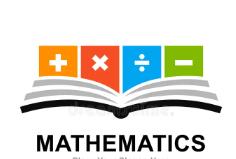





|
|
|
|
|
CONTACT 732-281-7122 732-423-8052 |
|
K12-MATHS-STATISTICS |
|
This course is designed to provide a basic understanding of descriptive and inferential statistics. Topics include the measures of central tendency, standard deviation, combinations and permutations, probability, sampling, and various distributions. Emphasis is on applications of statistical concepts.
This Course Covers The Following Probability & Statistics Concepts:
Interpreting Categorical and Quantitative Data Summarize, represent, and interpret data on a single count or measurement variable.
Summarize, represent, and interpret data on two categorical and quantitative variables. Interpret linear models.
Making inferences and Justifying Conclusions
Understand and evaluate random processes underlying statistical experiments
Make inferences and justify conclusions from sample surveys, experiments and observational studies Conditional Probability and the Rules of Probability
Understand independence and conditional probability and use them to interpret data
Use the rules of probability to compute probabilities of compound events in a uniform probability model
Using Probability to Make Decisions
Calculate expected values and use them to solve problems
Use probability to evaluate outcomes of Decisions
|
|
Students learn counting methods, probability, descriptive statistics, graphs of data, the normal curve, statistical inference, and linear regression. Proficiency is measured through frequent online and offline assessments, as well as asynchronous discussions. Problem-solving activities provide an opportunity for students to demonstrate their skills in real-world situations. Prerequisite: Algebra II (or equivalent)
Unit 1: Representing Data Graphically
Students develop skills and instincts that will allow them to create clear, convincing presentations of any data set they encounter. They also learn to look at any data chart or plot with a critical, mathematical eye and point out trends and important features of the data. They work on an extended graphing exercise throughout the unit and prepare a presentation.
Course Introduction Introduction: Representing Data Graphically Data and Variables Graphs of Categorical Data Two-Way Tables Line Plots Frequency Tables Histograms Stem-and-Leaf Plots Time Series Plots Unit 2: Representing Data Numerically
Students work with real data from 55 national parks in the United States, learning how to represent an entire set of data by using single numbers that describe where the center of the distribution is located and how the data are spread.
Introduction: Representing Data Numerically Measures of Center Box Plots Determining Quartiles Outliers Comparing Data Sets Measuring Spread Transforming Data Sets Unit 3: Counting and Probability
Students learn mathematical formulas for counting large sets and determine the number of combinations and arrangements. They also learn basic probability and the difference between experimental and theoretical probability.
Introduction: Counting and Probability Counting Methods Permutations Combinations Basic Probability Geometric Probability Mutually Exclusive Events Overlapping Events Independent and Dependent Events Experimental Probability Unit 4: Random Variables and Distributions
Students begin to develop a more keen understanding of descriptive statistics.
Introduction: Random Variables and Distributions Creating Probability Distributions Interpreting Probability Distributions Expected Value Binomial Distributions Continuous Random Variables The Normal Distribution Standardizing Data Comparing Scores The Standard Normal Curve Finding Standard Scores Unit 5: Sampling
Students begin to learn about sampling and how to apply statistical methods to valid samples.
Introduction: Sampling Sample and Population Bias in Sampling Reducing Bias Statistics and Parameters Interval Estimates Unit 6: Statistical Inference
Students learn how to put the power of statistics to work.
Introduction: Statistical Inference The Central Limit Theorem Estimating Means Mean Differences Estimating Proportions Proportion Differences
Unit 7: Relationships Between Variables
Students learn how to identify and describe relationships between variables.
Introduction: Relationships Between Variables Scatter Plots Association The Correlation Coefficient Fitting a Line to Data Least Squares Regression Regression Analysis Cautions in Statistics Unit 8: Semester Review and Test
Students review what they have learned and take the semester exam.
Semester Review Semester Tes |
